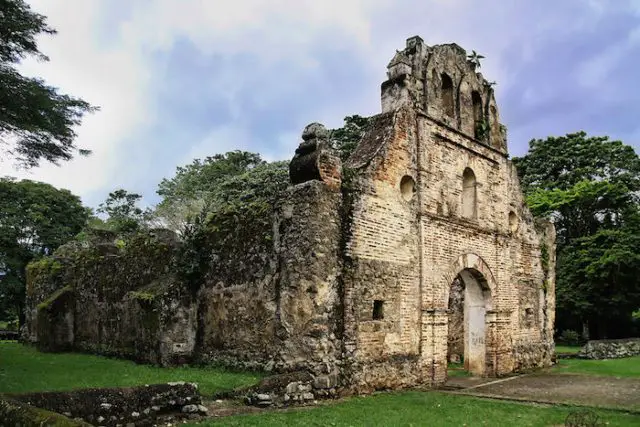The Ujarrás Ruins of Costa Rica were declared a national monument on December 11th, 1985. According to Thiel around 1570 the parish was founded, with a reddish chapel like a ranch, built by the Franciscan missionaries. The primitive church was built between 1575 and 1580. It was made of adobe, pitchforks and tile. It was renovated from 1638 to 1640 by Governor Gregorio Sandoval
The church of lime that we know was made by Governor Gómez de Lara. It was small, had a sacristy, cloister and various rooms for the doctrinarie and the deputies and pilgrims who used to go down to Cartago for the festivities of the Virgin. The roof of all these constructions was made of clay tiles.
Franciscan style
The façade of the church, with a single door open to the front in the Franciscan style (Colonial); Side doors, made of wood, with two leaves, with their corresponding knockers. Outside the front door and on top of it there was a plank balcony, with its corresponding railing from where the bells were rung. It is worth mentioning that the complex of the Church of Ujarrás, consisted of several parts such as the cemetery, sacristy, convent and school.
It should be ruled out that it is in this church where four buttresses and widening of the wall appear for the first time that serves to receive the thrust of vaults or arches, these structural reinforcement elements were widely used in Hispanic America.

Of Renaissance origin
Regarding its façade, it is of clear Renaissance origin, its influence probably comes from the facades of Santa María Novella from 1456, Alberti and Santa Trinidad from 1593, from Bontaleti.
As in Italy a concern, for the proportions and geometry of the facade that can be seen in the three bodies. The first with a main door with a semicircular arch. The second body with the traditional Renaissance oculos of the choir windows, which are transformed into an arched window.
Third body in which the Italian tympanum was transformed into a bell tower with five pinnacles with two perforations for the bells. The curved side scrolls that join the first and third bodies that cover the gabled roof, their movement announce the arrival of the Baroque. Curious, in Ujarrás, there is also a circle like in Santa María Novella, in which a monogram of Christ was placed. In Ujarrás the Virgin was put in front.

